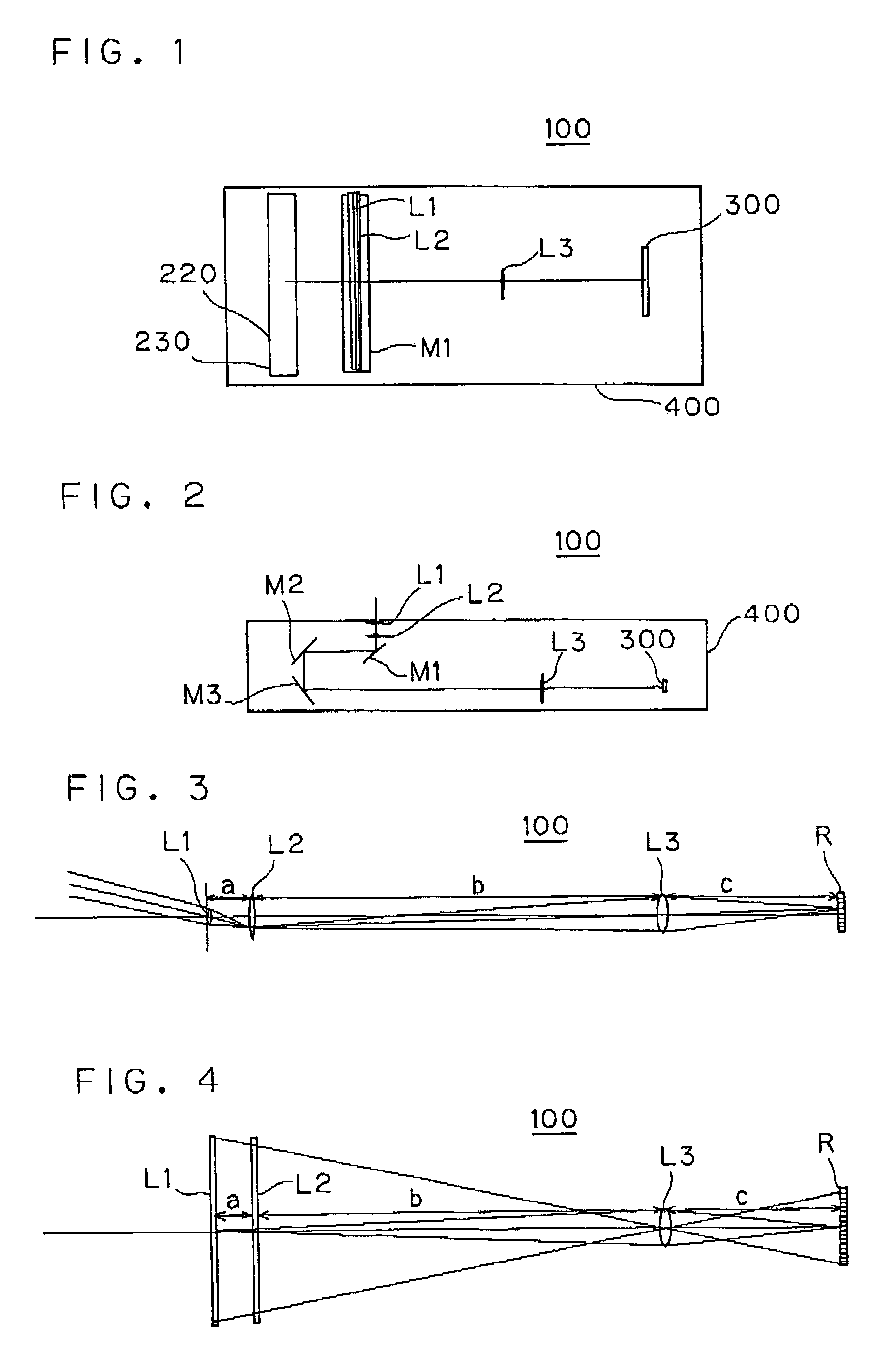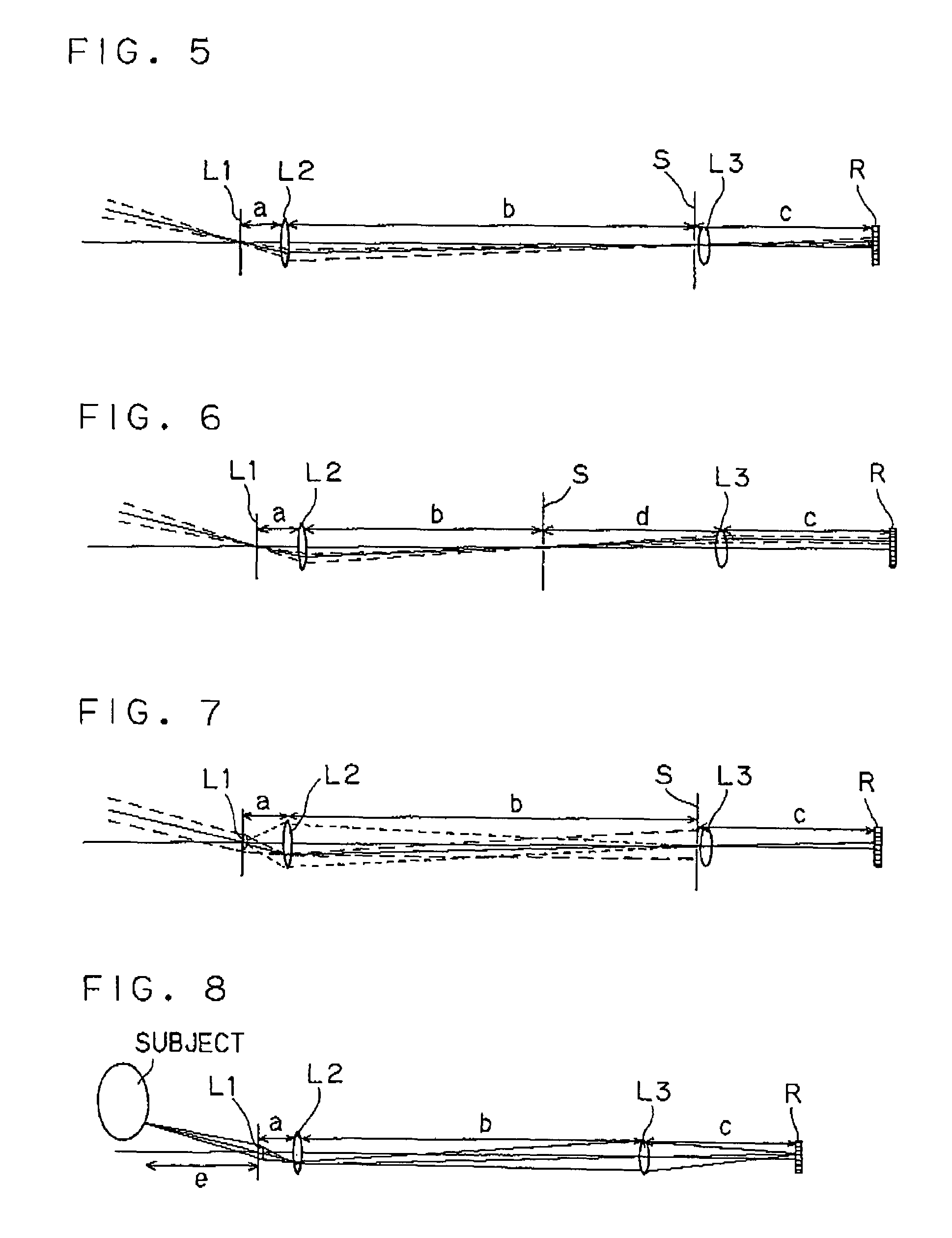Three-dimensional light ray input apparatus
a technology of light ray input and three-dimensional image, which is applied in the direction of optics, lenses, instruments, etc., can solve the problems of complex processing of display, deterioration of 3d image quality, and problem of vareation among driving mechanisms, etc., and achieve the effect of being inexpensiv
- Summary
- Abstract
- Description
- Claims
- Application Information
AI Technical Summary
Benefits of technology
Problems solved by technology
Method used
Image
Examples
embodiment 1
(3) Modified Embodiment 1
[0109]It is also conceivable to perform scanning via three mirrors in the same way as in Embodiment 1. Lens L2 and mirror M1 are disposed integrally. Mirrors M2 and M3 are moved at a half velocity of scanning M1 to enter light the focusing lens L3 such as same distance.
embodiment 2
(4) Modified Embodiment 2
[0110]It is also conceivable to control the shape of the aperture S incident on the L3 in the vertical direction and in the horizontal direction independently. The size of the aperture in the vertical direction corresponds to the image depth of field. The size of the aperture in the horizontal direction corresponds to the obtained resolution (resolution of the light rays) in the horizontal direction. If the aperture is made smaller, obtainable is better resolution of the light rays. However, the aperture is corresponded the amount of light (exposure) in use, the aperture is adjusted vertically and horizontally according to the circumstances.
embodiment 3
[0111]A three-dimensional light ray input apparatus 100 of Embodiment 3 is next described by referring to FIG. 6.
[0112]In the present embodiment, a slit S is placed into the position of the focal plane on the object side of the lens L3. Thus, the lens L3 selects parallel light focusing image sensor. This also yields advantages similar to those of Embodiment 2. In this case, image sensor area is more than wide lens L3 length in horizontal direction.
PUM
 Login to View More
Login to View More Abstract
Description
Claims
Application Information
 Login to View More
Login to View More - R&D
- Intellectual Property
- Life Sciences
- Materials
- Tech Scout
- Unparalleled Data Quality
- Higher Quality Content
- 60% Fewer Hallucinations
Browse by: Latest US Patents, China's latest patents, Technical Efficacy Thesaurus, Application Domain, Technology Topic, Popular Technical Reports.
© 2025 PatSnap. All rights reserved.Legal|Privacy policy|Modern Slavery Act Transparency Statement|Sitemap|About US| Contact US: help@patsnap.com



